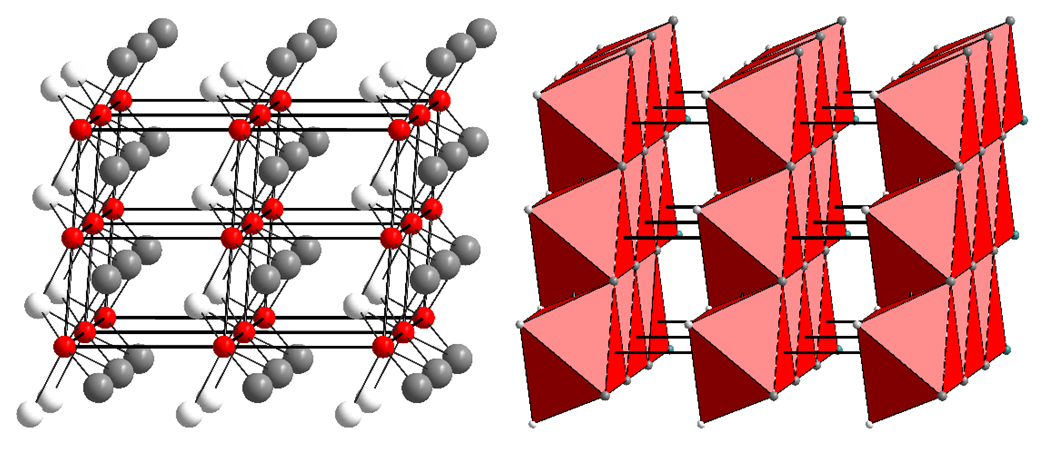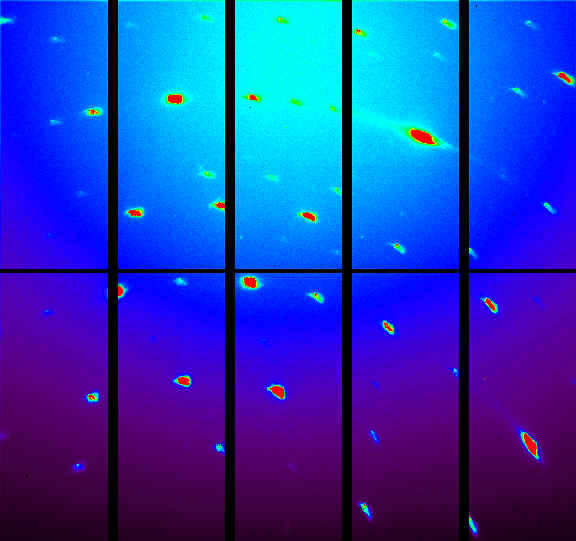SCIENTIFIC ACHIEVEMENT
Researchers used the Advanced Light Source (ALS) to help characterize two highly unusual nickel-containing minerals, both unearthed in an ancient geological site in southern central Siberia.
SIGNIFICANCE AND IMPACT
The findings extend our understanding of naturally occurring mineral species and varieties and provide useful insights into the environments leading to the formation of potentially valuable mineral ores.

Ognit complex, southern central Siberia
Like a tiny needle in a sprawling hayfield, a single crystal grain just tens of microns in size—found in a borehole sample drilled in southern central Siberia—had an unexpected chemical makeup. Researchers suspected that the grain, unusually enriched in bismuth, could be a new species of mineral. A second interesting find was recovered in the same region: a cobalt-rich sample measuring just 20 microns across, possibly representing a novel variety of a known mineral, maucherite.
The minerals were sourced from a place known as the Ognit complex in Siberia’s Sayan Mountains region. This remote geological site dates back over 700 million years (predating the supercontinent Pangaea) and is known to be rich in metal deposits, including nickel, chromium, and rare platinum-group elements indispensable to automotive, electronics, and manufacturing applications. By studying unusual new mineral samples, scientists can gain useful insights into the geological conditions that have led to the formation of valuable mineral ores, in addition to extending our fundamental understanding of mineralogy. The difficulty, however, is that newly discovered minerals are extremely rare and are often only available in very small amounts.

Microdiffraction—taking on the “desperate cases”
Typically, researchers use optical microscopes, scanning electron microscopes, and conventional x-ray diffraction to study mineral samples. But in “desperate cases” such as this, where the crystal samples are so precious and small that researchers cannot easily extract them from surrounding materials without damaging the crystals, conventional approaches are out of the question. Thus, the researchers brought their samples to the ALS.

At ALS Beamline 12.3.2, a technique known as x-ray Laue microdiffraction was customized to study tiny crystal samples. The ALS technique scans across the entire sample without the need to rotate the crystal or separate it from its surroundings. The technique uses a narrowly focused x-ray beam that spans a range of energies to explore the atomic structure in exquisite detail. While the entire scan is completed within a few minutes, the data analysis for this technique is far more complex than for conventional diffraction and requires substantial computing power. Researchers use computer clusters at Berkeley Lab’s National Energy Research Scientific Computing Center (NERSC) and Laboratory Research Computing to process the data from the Laue microdiffraction experiments.
Explaining the anomalous compounds
The results showed that the bismuth-enriched compound is similar to a mineral called melonite, composed of nickel and tellurium but not associated with a high concentration of bismuth. Attempts to synthesize the new compound were unsuccessful, suggesting that special conditions were important to stabilize its structure. Similarly, the unusual characteristics of the cobalt-rich variant of maucherite implied strongly atypical conditions at its formation.
The researchers concluded that the anomalous compositions of the Ognit minerals can be explained by a mechanism of metastable crystallization consistent with rapid cooling in a fluid-enriched system, possibly related to late-stage degassing of magma. On the strength of these studies, the bismuth-rich compound was officially approved as a unique mineral named ognitite by the Commission on New Minerals, Nomenclature and Classification (CNMNC) of the International Mineralogical Association (IMA). The research team is already employing the same approach to other tiny samples of promising new mineral candidates.
Contact: Andrei Barkov, Nobumichi Tamura
Researchers: A.Y. Barkov (Cherepovets State University, Russia), L. Bindi (University of Florence, Italy), N. Tamura and C.V. Stan (ALS), G.I. Shvedov (Siberian Federal University, Russia), B. Winkler and W. Morgenroth (Frankfurt University, Germany), R.F. Martin (McGill University, Canada), F. Zaccarini (University of Leoben, Austria), and C.J. Stanley (Natural History Museum, London).
Funding: Russian Foundation for Basic Research and UK Natural Environment Research Council. Operation of the ALS is supported by the U.S. Department of Energy, Office of Science, Basic Energy Sciences Program.
Publication: A.Y. Barkov, L. Bindi, N. Tamura, G.I. Shvedov, B. Winkler, C.V. Stan, W. Morgenroth, R.F. Martin, F. Zaccarini, and C.J. Stanley, “Ognitite, NiBiTe, a new mineral species, and cobaltian maucherite from the Ognit ultramafic complex, Eastern Sayans, Russia,” Mineral. Mag. (2019), doi:10.1180/mgm.2019.31.
Adapted from the Berkeley Lab news release, “Mineral Discovery Made Easier: X-Ray Technique Shines a New Light on Tiny, Rare Crystals.”
ALS SCIENCE HIGHLIGHT #403